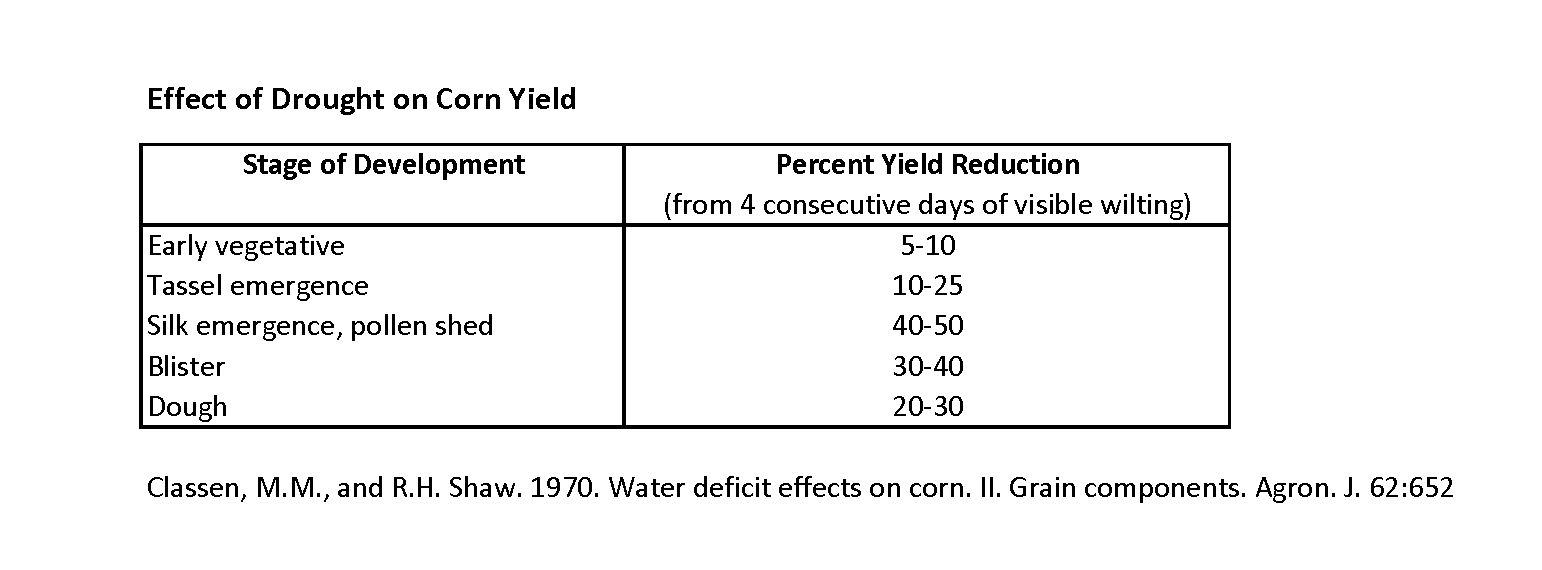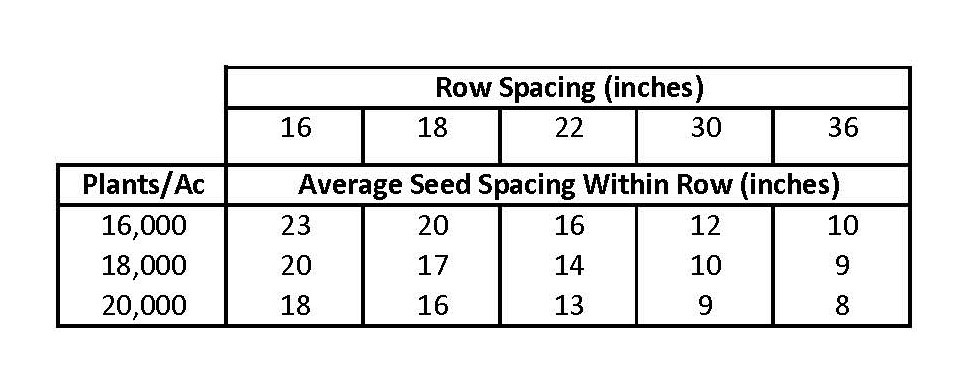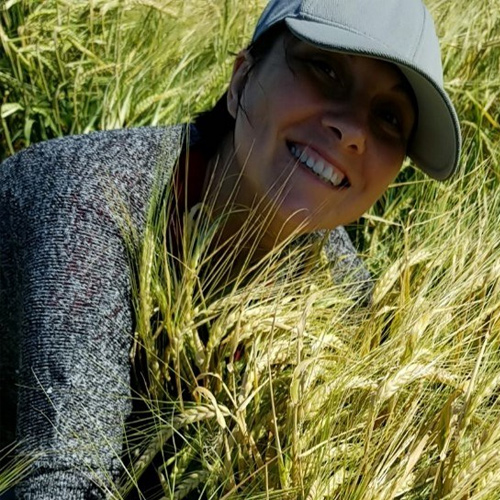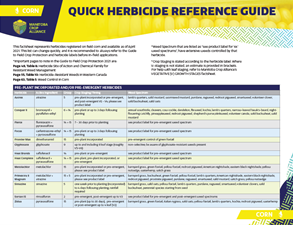On-farm 4R Nutrient Stewardship Data Collection Continues to Expand with New Partners and Crops
By Fertilizer Canada
FOR IMMEDIATE RELEASE
August 09, 2021
Ottawa, ON – The Canadian agriculture industry is a leader in implementing on-farm sustainable practices. To demonstrate 4R Nutrient Stewardship – Right Source @ Right Rate, Right Time, Right Place® adoption on Canadian farms – Fertilizer Canada is pleased to announce the expansion of the Fertilizer Use Survey to include additional crops: wheat, flax, sunflowers, and corn in Western Canada.
“The data from the Fertilizer Use Survey provides us with critical information on the current state of fertilizer management in Canadian crop production and assessing grower awareness and adoption of 4R Nutrient Stewardship,” said Karen Proud, President and CEO of Fertilizer Canada. “The survey shows us how agri-retailers and farmers across Canada are implementing 4R Nutrient Stewardship, which is an approach that has been demonstrated to increase crop production while protecting our environment.”
The Fertilizer Use Survey provides comprehensive, best available data for commercial fertilizer use and management practices. Since 2014, the Fertilizer Use Survey has provided a credible source of information on fertilizer practices and trends across Canada. The survey also examines the adoption of 4R Nutrient Stewardship related to crop type, region, soil practices, and farm size. Additionally, the survey offers a comparison of science-based practices shown to reduce environmental impacts, comparing the adoption of 4R Nutrient Stewardship with crop performance and environmental stewardship. These comparisons utilize statistically significant metrics that support our organizations in our achievements and aid in keeping both grower members and decision-makers informed and aware.
Fertilizer Canada and our partners – Canadian Canola Growers Association (CCGA), Grain Farmers of Ontario (GFO), Ontario Agri-Business Association (OABA), Christian Farmers of Ontario (CFFO), Ontario Federation of Agriculture (OFA), Manitoba Crop Alliance, Saskatchewan Wheat, and Alberta Wheat Commission – will continue to work with Status Ag Research to facilitate the survey utilizing their robust, unbiased grower database and vast experience doing agricultural market research. Their team has extensive experience working in this multi-faceted market by applying collective agri-business knowledge to generate the best possible information. Stratus does a great job of transforming reams of complex research data into helpful information that Fertilizer Canada, and our partners, can put into action.
“The Fertilizer Use Survey highlights the great work growers are currently doing to implement 4R Best Management Practices,” said Mike Weddel, President of Stratus Ag Research. For example, 4R practices such as banding Phosphorus fertilizers are being implemented by over 90% of canola growers in Western Canada. In Ontario, we are also seeing an increasing trend for corn growers applying their Nitrogen Fertilizer in-crop moving from 50% in 2015 to 60% in 2020.”
“Manitoba Crop Alliance is proud to partner with Fertilizer Canada and the other organizations involved in the Fertilizer Use Survey,” says Fred Greig, Chair, Manitoba Crop Alliance. “The Fertilizer Use Survey is an indicator on the good work our producers are doing, and with the expansion to include additional crops in Western Canada (wheat, flax, sunflowers and corn), we have an even better benchmark to work towards our goal of having 30 million acres implementing 4R Practices by 2025.”
“Grain Farmers of Ontario is a long-time supporter of the 4R program. The fertilizer use survey is an important tool to help us understand Ontario grain farmers’ awareness and adoption of 4R Nutrient Stewardship, while also shedding light on some of the advancements the agriculture industry has made with technology, research, and agronomy to manage nutrients on the farm,” said Crosby Devitt, CEO, Grain Farmers of Ontario.
“The data from the survey will allow us to gain a further understanding of how wheat farmers in Alberta are managing fertilizer decisions, plus help direct future extension and research initiatives. We view this as an opportunity to grow and further increase fertilizer efficiencies in wheat production, as well as limit our environmental footprint,” said Todd Hames, Alberta Wheat Commission Chair.
“The Fertilizer Use Survey documents sustainable practices canola farmers are using currently and provides a benchmark to measure improvement over time,” says Mike Ammeter, Chair of Canadian Canola Growers Association. “The resulting knowledge can enhance the economic and environmental sustainability of canola farming in the future.”
Within our Strategic Plan, Fertilizer Canada member companies have set a target goal of having 30 million acres implementing 4R practices, measured through the Fertilizer Use Survey by 2025. Fertilizer Canada is looking forward to continuing this work with our partners to collect crop-specific fertilizer use data, supporting our shared economic and environmental sustainability goals.
-30-
Fertilizer Canada represents manufacturers, wholesale and retail distributors of nitrogen, phosphate, potash and sulphur fertilizers. The fertilizer industry plays an essential role in Canada’s economy, contributing $23 billion annually and over 76,000 jobs. As the unified voice of the Canadian fertilizer industry, Fertilizer Canada works to promote the safe, responsible, and sustainable distribution and use of fertilizer. Please visit fertilizercanada.ca.
MEDIA CONTACT:
Brittany Thibaudeau
Communications Specialist
bthibaudeau@fertilizercanada.ca
(613) 786-3043
Brent McCallum, Plant Pathologist at AAFC Morden

Specializing in wheat leaf rust disease, Brent McCallum is a Plant Pathologist at the Morden Research and Development Centre (Morden RDC) for Agriculture and Agri-Food Canada (AAFC). McCallum earned his Bachelor Degree in Agriculture at the University of Manitoba (UM) before completing his Masters Degree in the Department of Plant Science at UM. Next, he earned his PhD focusing on bean rust, wheat stem rust and the genetics of rust and rust resistance at the University of Minnesota. McCallum spends half his time living in Morden for work and half his time living in Winnipeg with his family.
Where did you work before AAFC Morden?
After my PhD I returned to Canada to continue my research at UM focusing on a disease of lentils. One year later I moved over to AAFC in a postdoc position where my research was focused on fusarium head blight (FHB) in barley until I got my current position in rust pathology.
What got you interested in this area of work?
I was really interested in genetics but I had the practical interest in farming and farm production from growing up with parents who farmed. The two areas kind of went together because you can apply genetics directly through plant breeding or genetic analysis of pathogen populations. It seemed like an area where I could combine my two strong interests. I really find it enjoyable because I get to see the varieties we work on with breeders go through the registration process and eventually see them in production in the fields.
Tell us a bit about what you’re working on at Morden RDC.
Our research is focused on developing genetic resistance to leaf rust and other wheat diseases like FHB. We work with plant breeders and geneticists to incorporate this resistance into Canadian wheat cultivars. We do surveillance within Manitoba to figure out where the diseases are and how severe they are. Sometimes we access farmers fields but we also take advantage of the Manitoba Crop Variety Evaluation Trials (MCVET). This collaboration is great because MCVET doesn’t apply fungicides so we are able to find all of the diseases in each area and the levels of each.
We do an annual survey where we collect pathogens throughout areas of western Canada (areas we can access) and we have collaborators that send us samples from all over the country. We then do a detailed analysis of the pathogens variance profile so we can see which genes are effective/ineffective against the pathogen and compare those results with previous years to see how the pathogens have acted over time.
In addition, we do a lot of screening for disease resistance cultivars that are in development. We screen all the wheat lines being proposed for registration for their level of resistance and publish our ratings in the provincial seed guides. We screen diseases like wheat leaf rust, fusarium, stem rust and stripe rust so farmers can get a good idea how the crop lines will perform in their fields.
What can you say about the value of farmers providing funding and support to your organization?
Farmer funding and support is really important because farmers are the ones who have a grasp on what is valuable to them and what is going to pay off in their production practices. They are the ones who find new or emerging problems so we value any feedback that goes into the research we can do to help reduce the disease or problems they are facing. I also think most of the farmers are very patient and understand the research they invest in won’t produce results for one to two years.
How does that farmer funding and support directly benefit farmers?
It’s a good feedback loop – they can direct us to the important issues and they can also help us apply the solutions. There is no point developing disease resistant varieties if nobody is going to grow them. The cultivars have to be in good backgrounds, high yielding, high quality germplasms so producers will grow them without taking a big hit by growing something that’s resistant to wheat midge, fusarium, or leaf rust. They can grow high quality varieties or adapt a new management technique or something that works for them. Its more the fact that they have valuable input on what problems to tackle, but then also in supplying the funding to tackle those problems and the implementation of solutions. They are really critical in all three of those phases.
I (with additional collaborators) just finished an interesting article titled, We stand on guard for thee: A brief history of pest surveillance on the Canadian Prairies, with an interesting message; we’re all specialists, for example I work on one disease on one crop. Farmers are generalists, they have to work with multiple problems on multiple crops. Fertility, insects, diseases, weeds, resistance, whatever the case may be. This paper helped us think more broadly because we looked at how all pest surveillance across western Canada has developed over time. Click here for more information or to read the review article.
How do you spend your time outside of work?
I enjoy being active and being outside. I like to curl and play hockey in the winter and I enjoy outdoor activities like cycling and golf in the summer.
What gets you excited about the work you do?
Agriculture is a very diverse field and you get to meet a lot of good people. The people are my favourite thing. The group I work with is a very dedicated group of individuals. They are very skilled, highly trained, hard workers who are conscientious and really good to get along with. In addition, we collaborate with so many good people across agriculture Canada, the universities, industry and private industry.
What is the best piece of advice you’ve received?
Try to understand the basics of things. Some things can seem quite confusing on the surface until you drill down and get to the root of the situation. Try to understand it step by step. That’s kind of what your graduate training teaches you to do. Not to skim long the surface, but to try to get a deep understanding of what is going on.
Effects of Drought Stress on Corn
In recent years, we have dealt with drought stress in corn a lot. Most frequently, it has been overcome by timely rains and not had an impact province-wide. 2021 doesn’t appear to be letting up on the crop completely and reproductive stages of corn are just around the corner. Some sheltered areas along tree rows and yards are even beginning to tassel.
So, what happens to the plant when there isn’t enough moisture? Most visibly, corn leaves begin to curl and make the plant resemble pineapple leaves or onion greens. This occurs because the leaves are protecting themselves from excessive moisture loss or transpiration. Believe it or not, the more readily a plant curls its leaves up, the more beneficial it is to that plant. This year it is hard to determine with absolute positivity whether those plants are protecting themselves, or really in dire straits for moisture availability. There is no question, though; leaf rolling is a response to moisture deficits and it is widespread. This transpiration increases as leaf area increases and it is the mechanism that water moves from the soil, through the plant and into the atmosphere. If leaf rolling is resulting from true drought stress and occurs for 12+ hours a day, grain yield is likely to decrease, even prior to reproductive staging.
Right now, mid-July 2021, the crop is at a detrimental stage for water requirements. The corn is a little behind “normal” as a result of the lack of moisture and high heat combination, so on a regular year the corn would likely be at tassel (VT) or silking (R1) stages. “Potential ear size is already determined by the time silks emerge from the ear shoots. In fact, potential kernel row number is set by the 12-leaf collar stage (about chest-high corn.) Potential kernel number per row is determined over a longer time period, from about the 12-leaf collar stage to about 1 week prior to silk emergence” (https://www.agry.purdue.edu/ext/corn/pubs/corn-07.htm).
We know that row number is heavily predetermined through genetics, but kernels per row is not and has a strong sensitivity to environmental stresses. Below is a table identifying the potential yield reduction from drought stresses (with 4 consecutive days of leaf wilting) throughout the growing season.
Severe drought stress has the greatest impact during silk elongation, which often results in poor pollination. Silks on the base of the ear begin to elongate first, followed by those from the center and then the tip of the ear. So, when plant water is in low supply, the silks elongate slowly and may not even elongate beyond the husk. If the silk isn’t outside the husk during pollen shed, it will not pollinate those potential kernels. During these conditions, silks that do emerge have an increased chance of desiccating quickly, making them unable to receive pollen.
There is no gain made in worrying about what may happen over the next few weeks. What is promising is that corn has an amazing ability to recover from drought stress when it does receive rain. It is very unlikely that no pollination will occur whatsoever, but if dry conditions persist, it is likely that grain will not fill to its full potential. This is where rain events can really improve grain quality and the length of the crop’s life after it has been under severe stress.
Farming through a drought is something Manitobans haven’t had to do in decades and it is a steep learning curve. The best thing you can do is choose wisely where to put crop inputs and where not to. Producers are all under a great deal of stress this year, but we are all here to provide each other with the support we need. This year is teaching us a great deal about what crops and what fields handle a lack of moisture the best, in the same way that we learned about excess moisture tolerance in past years.
With that being said… time to go fishing??
Santosh Kumar, Wheat Breeder at AAFC Brandon

Follow @@santoshaafc on Twitter!
Santosh Kumar, PhD is a Research Scientist at the Brandon Research and Development Center (BRDC) for Agriculture and Agri-Food Canada (AAFC). Kumar completed his master’s degree at the Indian Agricultural Research Institute in New Delhi, India before moving to Canada for his PhD program. As a PhD student at the University of Manitoba (UM) Kumar worked on barley physiology and genetics. He currently lives in Brandon, Manitoba with his wife and two children.
Where did you work before the AAFC-BRDC?
After my PhD and before I became a Research Scientist at the BRDC I was working at the UM as a Research Associate focusing on the genetics and genomics of flax.
What got you interested in this area of work?
I started my career learning about the basics of agriculture: how do you manage plants, what do the fields look like, and so forth. But I felt I wanted to be more specialized and better understand how the plants function. So, I did my master’s in the physiology of plants. When I was doing my master’s, I was advised to look into the emerging discipline of biotechnology. So, I did my PhD in Molecular Physiology learning a lot about biotechnology. After my PhD, I worked on genomics and bioinformatics as a research associate.
As I advanced my academic career, I was becoming more and more focused and I asked myself, where can I use all of this knowledge I have gained? If I’m not using it then why have I become so focused? That’s how I got into breeding and working with plants, and utilizing my specialized knowledge to help improve a crop we rely on.
Tell us a bit about what you’re working on the AAFC-BRDC.
I’m a Wheat Breeder whose primary role is to develop new, premium quality wheat varieties. My job is to develop elite wheat breeding populations in the Canada Western Red Spring cultivars for the eastern prairies (region east from the middle of Saskatchewan into Manitoba) and the northern prairies (region north from Saskatoon across all three prairie provinces). Those two areas are my ‘playground’ where we look at early maturing varieties (for the northern region) and high yielding disease tolerant varieties (for the eastern region).
For the eastern prairies, we focus on disease resistance traits like fusarium head blight resistance, leaf rust, stem rust and stripe rust, while maintaining the high yield and quality parameters of Canada Western Red Spring varieties. For the northern prairies we look at early maturing lines where wheat yield can start to suffer because the plants are not staying in the field for that long. In this case we have to push yield while maintaining the early maturity type as well as the Canada Western Red Spring quality with the disease package that is required in the northern prairies.
It’s a diverse program where we are looking at very different traits for different regions, and are coming up with varieties to suit those areas.
In addition, I manage a molecular genomics lab where we develop new molecular markers to assist with breeding. The markers and genomics allow us to do efficient selection faster for the germplasm so we can get those varieties into the hands of the farmers sooner. It can take 10 to 15 years to develop a variety (too long) and farmers need something that is better than the previous variety, sooner.
The work I do is a team effort. I would like to acknowledge and thank all of the people who are involved in breeding at the BRDC in the wheat group and in our cereal group. We cannot perform without the help of our Canadian and international partners. We collaborate with other researchers and teams working in different areas like pathology, quality, and agronomy. These collaborations are highly appreciated and a critical part to what we do.
What can you say about the value of farmers providing funding and support to your organization?
Breeding is expensive and time consuming. We are funded through AAFC as well as all three prairie provinces under the Canadian Agricultural Partnership (CAP). Without that funding the research doesn’t progress, it’s a very critical component. We need that patience, continuous flow of funding and resources so we can continue to do the breeding that benefits farmers and the country as a whole.
Some figures tell us that the return on investment is 20 to 1. That means every one dollar spent on breeding returns 20 dollars back to farmers, to the community, and to the country. We strive to provide the best value for that investment back to farmers.
How does that farmer funding and support directly benefit farmers?
The varieties we develop in Canada serve two purposes. The first purpose is the variety becomes the source material to make more improved varieties for the future. The second purpose is the varieties we develop are seeded in the field. Those varieties that perform and yield well, have good disease resistance and high quality allow the farmer to sell it to the international market.
How do you spend your time outside of work?
I’m mostly an outdoorsy person. I like long walks in the evening, playing with my kids and I love movies. I also like to learn a lot about technology (be it in science or just any new things) that makes me think ‘okay, how does this work?’.
What is your favourite piece of technology? Why?
My cell phone – it comes in handy every time I need something. Looking for information, taking pictures, watching videos when I’m stuck trying to solve a problem or looking up diseases, its just amazing what a cell phone can do these days.
What gets you excited about the work you do?
The people! I work with an amazing group of people and I appreciate their dedication towards the work we do. I believe in the model that if you take care of the people, work takes care of itself.
Follow @santoshaafc on Twitter!
Assessing Plant Stands
Seeding rate for sunflowers depends on sunflower type. Oil-type sunflower populations range from 20,000 – 22,000 plants per acre (0.6 plants per ft2) but confection-type sunflowers should not exceed 18,000 plants per acre (0.4 plants per ft2) to ensure large seed size.
The easiest method to measure plant stand per acre is by doing the following:
1. Determine row width and using the table below, identify the correct distance to measure 1/1,000th acre.
2. Using a measuring tape, lay out the appropriate length for 1/1,000th acre.
3. Count all plants in the length laid out. When there are doubles, consider only counting one of the plants, since only one is likely to be productive.
4. Document plants counted.
5. Repeat steps 2-4 ten times.
6. Average all plant counts to determine and approximate final plant stand.
Another simple way to assess plant stand is to use the table below, developed by Manitoba Agriculture and Resource Development:
Seed Density as a Function of Row Spacing
In years when establishing a healthy and robust sunflower crop seems impossible due to various growing conditions, it is a very difficult decision on whether to terminate or keep a crop. Above are just a couple of ways to accurately determine how many plants are viable, which will help to estimate yield potential and all the costs required to bring sunflowers to maturity.
There is no documented data on the lowest plant population a producer can grow and still make a profit. Good record keeping and market knowledge will help someone in this situation make an educated assessment on whether the crop will be profitable or not.
Ana Badea, Barley Breeder at AAFC Brandon

Follow @barleygoldcrop on Twitter!
Ana Badea, PhD is a Barley Breeding and Genetics Research Scientist for Agriculture and Agri-Food Canada (AAFC) at the Brandon Research and Development Centre (BRDC). Badea earned her Ph.D. degree from the University of Agricultural Science of Timisoara, Romania, in Plant Breeding and Genetics in 2003. Her Ph.D. research was mainly focused on the development of two-row winter malting barley.
Where did you work before the AAFC-BRDC?
In 2004 I joined AAFC at the Lethbridge Research and Development Centre (LeRDC) in Alberta as a visiting fellow. I moved to AAFC-BRDC, in Brandon, Manitoba in 2012 as the new barley breeder for the Six-Row and Hulless Barley Breeding Program. In 2017 I was entrusted with the leadership of AAFC’s flagship barley program: the Two-Row Barley Breeding Program.
What got you interested in this area of work?
I’ve always been interested in plant biology and genetics, but I’ve always wanted to help people around me and make a contribution to society. From a young age it was very clear to me I wanted to do something where I am connected to the land, which is why I chose to enroll in the University of Agricultural Science. In my first year of university, I was accepted to be a member of the “Breeding and Genetics Club”. It was there I discovered plant breeding, a perfect career choice for me as it allows me to do everything I’ve always wanted to do, and even more! As a barley breeder my main goal is to develop improved varieties. One of the best things is seeing farmers adopt these new varieties and as a result get better quality and yields.
Tell us a bit about what you’re working on at the AAFC-BRDC.
As the AAFC-BRDC Two-Row Barley Breeding Program leader I work with a team of dedicated colleagues to develop cultivars for three different barley classes; two-row malting, two-row feed and two-row hulless for food for western Canada, where more than 90% of Canada’s barley is grown. A new stream of barley cultivars is continuously required to keep up with emerging disease problems and changing environmental, economic and market conditions so producers and the industry remain competitive.
I’m involved in several research projects focusing on biotic and abiotic stresses in barley and barley genomics. For example, our team has recently released the first barley reference genome of a Canadian barley cultivar. A genome is the genetic code of a living organism, so if we understand its genetic code, we can better predict how the crop will perform allowing us to select those favourable traits more precisely. These traits –yield, disease resistance or quality – will make barley more profitable.
Another aspect of my role is helping cultivate the next generation in agriculture by training students and graduate students. Every year our breeding program offers high-school and undergraduate students the possibility for shadowing, or internship opportunities in the lab and/or the field. Training the next generation is very important since it helps develop a solid, skilled workforce.
What can you say about the value of farmers providing funding and support to your organization?
Barley breeding is a long-term effort that requires a strong commitment and support. Through the years farmers have provided guidance and funding that helped breeding programs stay focused to deliver on proposed targets. Farmer funding is critical for the success of the AAFC-BRDC barley breeding program. The funding helps our program make breeding plans that extend a little bit further enabling us to evaluate a larger number of breeding lines and capitalize on innovative research opportunities. It provides stability allowing us to maintain long-term, highly qualified, technical staff working on various activities required to develop new barley varieties.
How does that farmer funding and support directly benefit farmers?
On the breeding side, our ultimate goal is to deliver improved, field-ready barley cultivars that promote sustainable agriculture and help make farming operations more efficient and cost effective. Once we register a new cultivar it gets licensed to a seed distribution company and then made available to farmers. The process is a bit slower for malting barley since new cultivars need to undergo market development first. However, as seen in the past, the use of improved barley varieties often translates to increased revenue at the farm gate, lower risk and reduced variability for the barley grower’s income. Access to new and improved cultivars supports Canada to maintain its leading position as a premium barley supplier and, we like to believe, improves the competitiveness and profitability of our barley farms.
On the research side, a project that is very close to my heart is the Research on the Farm* new malt barley varieties led by the Canadian Malting Barley Technical Center in collaboration with Manitoba Crop Alliance. This project is a “win-win.” It allows me as a breeder to be in direct contact with the producers to receive feedback first-hand on our new varieties and better understand what needs to be improved upon next. The project gives farmers access to the newest genetics and helps determine the profitability of producing malting barley on their farm.
*The Research on the Farm Program collects data from real, working farms in order to test new practices or products over a wide range of farming environments to help guide management decisions. For more information visit https://mbcropalliance.ca/projects/on-farm-research-program.
How do you spend your time outside of work?
These days our family does long evening walks into the forest near Brandon. It is a real treat to see the forest transforming each season! Another activity our family enjoys is baking different types of bread and treats. Of course, most of them are being made out of the unmistakable, delicious nut-like flavour of barley flour. One of our family’s go-to treats is blueberry barley muffins. What better way to start your weekend mornings!
What is the best piece of advice you’ve received?
One thing that always stuck with me is what my grandfather, a hard-working farmer, told me one day when we were coming back from the field. I was quite young then, but I do remember how serious he was when he told me this: “Never forget to always be respectful to the land and the animals on your farm. They are the ones feeding you.”
What gets you excited about the work you do?
Many things excite me related to my work and it is difficult to narrow them down. If I had to, seeing the new cultivars adopted by producers and end-users, the versatility of the barley crop and the barley community are ones that come to mind first. The national and international barley community is a very exciting group to be part of. There is a lot of passion around barley and its products. Like one of my colleagues will say: “There is nothing better than a great cold beer in the summer or a hearty hot barley soup on a cold winter day”.
Follow Ana on Twitter @barleygoldcrop
Growth Stage and Herbicide Application
Herbicide applications are well-underway in corn, including tank-mixes. Fields should always be scouted before any herbicide application for weeds present, precise crop staging and environmental conditions that could have an affect on efficacy.
Applying a herbicide at early growth stages provides greater crop safety, in most cases. The corn plant has a smaller surface area to be in contact with the herbicide, which means a smaller risk of damage. Herbicides with active ingredients like 2,4-D or dicamba can need to be applied to the crop as early as possible for this reason: the larger the crop, the greater the plant surface area and the greater the risk to the crop. It is very important to refer to all herbicide labels and contact appropriate companies with any questions prior to applications.
Refer to Manitoba Crop Alliance’s Vegetative Growth Stage ID factsheet for staging tips.
Also available is a Quick Herbicide Reference Guide for current pre-emergent and post-emergent herbicides on the market in Manitoba.
Post-emergent herbicide application tips: (for full list, visit https://www.dekalbasgrowdeltap…)
- ALWAYS READ AND FOLLOW LABEL DIRECTIONS.
- Corn under stress may not have the ability to metabolize some herbicides quickly enough to avoid crop injury. Weeds under stress may not may not accept the herbicide to its full capacity.
- Spray additives can increase the rate of herbicide uptake by the crop.
- Herbicide residues from previous applications may remain in the spray tank causing contamination.
- Post-emergent herbicide injury symptoms can include leaf chlorosis or necrosis, onion leafing, internode stacking, rat tailing, ear pinching, ear bottlenecking, brace root malformation, and green snap.
Reference: https://www.dekalbasgrowdeltap…













